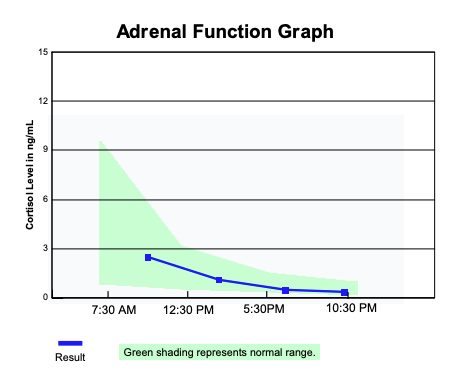Cortisol (Stress Hormone) Testing
Stress is a part of our lives, whether we like it or not. Luckily, our body has a system in place to help us cope. This includes the release of the hormone, cortisol, in response to stressful events.
However, this system breaks down, just like other parts of our body.
So, to figure out how to fix it, we run a test to get more information. In this case, it’s a 4 point cortisol test (aka adrenal panel).
The adrenals are a pair of small glands, found on top of the kidneys. These glands produce the hormone cortisol along with the catecholamine hormones adrenaline and noradrenaline (and others).
The adrenal glands are responsible for producing cortisol 24 hours per day.
Optimal cortisol output is highest within the first hour after waking, declines steadily through the day, and reaches a low during sleep. This promotes a healthy stress response AND good sleep.
The test measures salivary DHEA-S (dehydroepiandrosterone sulfate) and 4 markers of cortisol. Cortisol levels are plotted on a curve to assess how that release happens throughout the day.
Because adrenal gland dysfunction changes the trajectory of the cortisol profile, measuring cortisol is key. We measure cortisol levels at scheduled times throughout the day as it provides important information about how your body is managing your stress.
Factors contributing to poor stress health may include acute or long-term stress, trauma, insomnia, obesity, diabetes, and thyroid issues.


